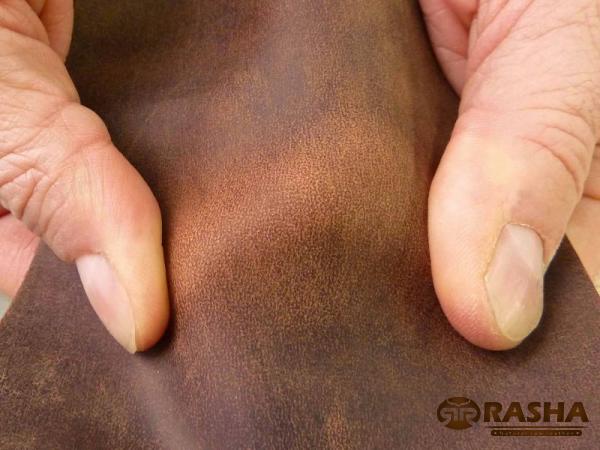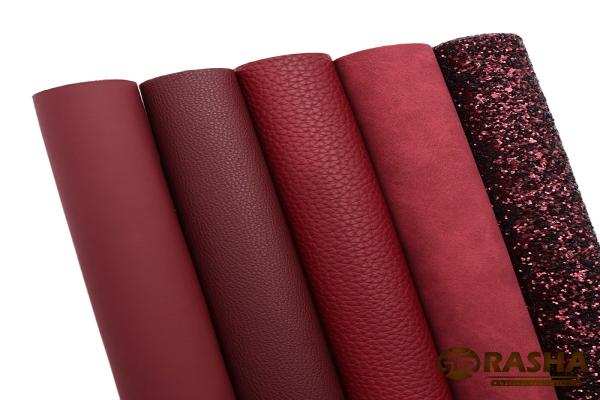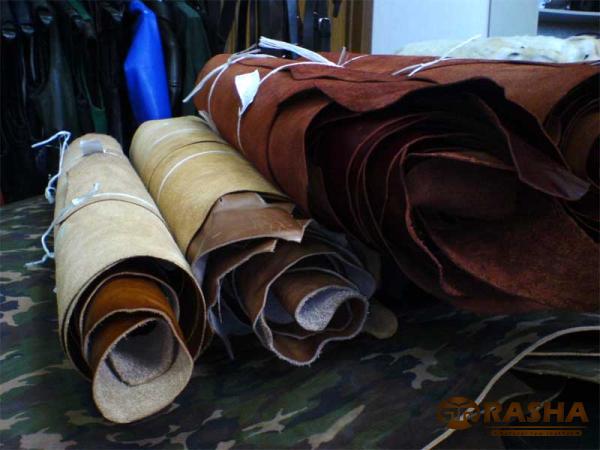A genuine leather material factory is a crucial component of the global leather industry. These factories are responsible for the production of high-quality leather materials that are utilized in various industries, including fashion, automotive, furniture, and accessories. This article delves into the operations of a genuine leather material factory, from the sourcing of raw materials to the final manufacturing processes. 1. Sourcing Raw Materials: A genuine leather material factory begins its operations by sourcing raw materials, primarily animal hides and skins. These materials are procured from various sources, including livestock farms, abattoirs, and tanneries. A crucial aspect of the sourcing process is to ensure that the raw materials meet certain quality standards and ethical guidelines. Additionally, the factory may also engage in sustainable practices, such as by ensuring the hides and skins are a byproduct of the meat industry. 2. Pre-Treatment and Cleaning: Once the animal hides and skins are acquired, they undergo pre-treatment and cleaning processes. This includes removing excess flesh, fat, and hair from the surface of the hides. The hides are then soaked in large vats filled with water and chemicals to remove any remaining impurities. This step plays a crucial role in preparing the hides for further processing. 3. Tanning: Tanning is a critical process in the production of genuine leather. It involves the treatment of processed hides with tannins, chemicals derived from plant materials or synthetic compounds. Tanning ensures that the hides become more durable, flexible, and resistant to decay. The tanning process can be carried out using various methods, such as vegetable tanning, chrome tanning, and synthetic tanning. Each method has its unique benefits and characteristics, and the choice depends on the desired end product. 4. Finishing and Coloring: After the tanning process, the leather goes through finishing processes, which enhance its appearance, texture, and durability. This involves trimming any excess material, buffing the surface to achieve a smooth finish, and adding various treatments to provide resistance against water, stains, and scratches. Additionally, the leather can be dyed using a wide range of colors, either through immersion or surface application. The finishing and coloring processes significantly influence the final appearance and quality of the leather material. 5. Quality Control: Throughout the various stages of processing, quality control measures are implemented to ensure that the leather materials meet specific standards. Skilled inspectors examine each batch of leather for any defects, such as scars, blemishes, or uneven dyeing. This step ensures that only high-quality materials are utilized for further manufacturing processes. Quality control is essential in maintaining customer satisfaction and reputation in the market. 6. Product Development: In addition to producing leather as a raw material, a genuine leather material factory may also engage in product development.

leather
 This involves utilizing the processed leather to manufacture a wide range of products such as shoes, bags, belts, and upholstery. These products can be either made in-house or supplied to other manufacturers. The factory may employ skilled craftsmen and designers to create unique and innovative designs that cater to the market’s demands. 7. Sustainability and Ethical Considerations: In recent years, the leather industry has faced increasing scrutiny regarding its environmental impact and ethical practices. Genuine leather material factories are now placing a greater emphasis on sustainability and ethics. This includes adopting environmentally friendly practices, such as reducing water and chemical usage, implementing waste management systems, and using eco-friendly tanning processes. Additionally, ethical considerations involve ensuring fair labor practices, protecting animal welfare, and promoting transparency throughout the supply chain. Conclusion: A genuine leather material factory encompasses various stages of production, starting from the sourcing of raw materials to the creation of high-quality leather materials. These factories play a critical role in the global leather industry, catering to the demands of various sectors such as fashion, automotive, furniture, and accessories. By adhering to high standards of quality control and embracing sustainable and ethical practices, genuine leather material factories continue to thrive and meet the growing market demands while prioritizing environmental stewardship and social responsibility.1. Market Demand and Trends in the Leather Industry: The genuine leather material factory operates within the broader context of the global leather industry. It is essential for the factory to stay informed about market demand and emerging trends in order to meet customer expectations. For instance, there has been a growing trend towards sustainable and eco-friendly products, leading to an increased demand for vegetable-tanned leather rather than chrome-tanned leather. The factory needs to anticipate these shifts and align its production processes accordingly to remain competitive in the market. 2. Technological Advancements and Automation: To enhance efficiency and productivity, genuine leather material factories are increasingly incorporating technological advancements and automation into their operations. Automated cutting machines, for example, can accurately cut leather pieces, optimizing material utilization and reducing human error. Additionally, computer-aided design (CAD) software allows for precise pattern-making and customization of leather products. By embracing these technologies, the factory can streamline its processes and deliver high-quality leather materials in a timely manner. 3. Supply Chain Management and Collaboration: Effective supply chain management is crucial for the smooth functioning of a genuine leather material factory. Collaborating with trusted suppliers for raw materials ensures a consistent supply, while maintaining strong relationships with clients and manufacturers ensures a steady flow of orders. Efficient logistics and inventory management systems help reduce lead times and avoid stockouts. By managing the supply chain effectively, the factory can optimize its operations, minimize costs, and meet customer demands.
This involves utilizing the processed leather to manufacture a wide range of products such as shoes, bags, belts, and upholstery. These products can be either made in-house or supplied to other manufacturers. The factory may employ skilled craftsmen and designers to create unique and innovative designs that cater to the market’s demands. 7. Sustainability and Ethical Considerations: In recent years, the leather industry has faced increasing scrutiny regarding its environmental impact and ethical practices. Genuine leather material factories are now placing a greater emphasis on sustainability and ethics. This includes adopting environmentally friendly practices, such as reducing water and chemical usage, implementing waste management systems, and using eco-friendly tanning processes. Additionally, ethical considerations involve ensuring fair labor practices, protecting animal welfare, and promoting transparency throughout the supply chain. Conclusion: A genuine leather material factory encompasses various stages of production, starting from the sourcing of raw materials to the creation of high-quality leather materials. These factories play a critical role in the global leather industry, catering to the demands of various sectors such as fashion, automotive, furniture, and accessories. By adhering to high standards of quality control and embracing sustainable and ethical practices, genuine leather material factories continue to thrive and meet the growing market demands while prioritizing environmental stewardship and social responsibility.1. Market Demand and Trends in the Leather Industry: The genuine leather material factory operates within the broader context of the global leather industry. It is essential for the factory to stay informed about market demand and emerging trends in order to meet customer expectations. For instance, there has been a growing trend towards sustainable and eco-friendly products, leading to an increased demand for vegetable-tanned leather rather than chrome-tanned leather. The factory needs to anticipate these shifts and align its production processes accordingly to remain competitive in the market. 2. Technological Advancements and Automation: To enhance efficiency and productivity, genuine leather material factories are increasingly incorporating technological advancements and automation into their operations. Automated cutting machines, for example, can accurately cut leather pieces, optimizing material utilization and reducing human error. Additionally, computer-aided design (CAD) software allows for precise pattern-making and customization of leather products. By embracing these technologies, the factory can streamline its processes and deliver high-quality leather materials in a timely manner. 3. Supply Chain Management and Collaboration: Effective supply chain management is crucial for the smooth functioning of a genuine leather material factory. Collaborating with trusted suppliers for raw materials ensures a consistent supply, while maintaining strong relationships with clients and manufacturers ensures a steady flow of orders. Efficient logistics and inventory management systems help reduce lead times and avoid stockouts. By managing the supply chain effectively, the factory can optimize its operations, minimize costs, and meet customer demands.
Specifications of leather
 4. Quality Assurance and Certification: The reputation of a genuine leather material factory relies heavily on the quality of its products. To establish credibility and gain customer trust, the factory may seek certification from industry bodies to demonstrate compliance with quality standards. For example, it may obtain certifications such as ISO 9001 for quality management systems or certification from Leather Working Group (LWG) to showcase commitment to sustainable practices. These certifications provide assurances to customers and enhance the factory’s competitive advantage in the market. 5. Research and Development: Continuous research and development (R&D) are vital for a genuine leather material factory to innovate and stay ahead of the competition. Investing in R&D allows the factory to explore new materials, experiment with different tanning and finishing techniques, and develop innovative products. By staying abreast of industry advancements and consumer preferences, the factory can adapt its processes and products to meet evolving market demands. 6. Collaboration with Designers and Retailers: Collaborating with designers and retailers can offer significant benefits to a genuine leather material factory. Designers provide insights into emerging fashion trends and can help create innovative product designs that resonate with consumers. Retailers, on the other hand, provide valuable market feedback and help promote the factory’s products. Establishing partnerships with these stakeholders can be mutually beneficial and open up new avenues for growth and market expansion. 7. Corporate Social Responsibility (CSR) Initiatives: As corporate social responsibility gains prominence, genuine leather material factories are increasingly focused on sustainable and ethical practices. These factories may engage in CSR initiatives such as reducing energy consumption, implementing waste management systems, and supporting local communities. Incorporating sustainability practices and communicating them to customers builds trust and highlights the factory’s commitment to social and environmental responsibility. 8. International Market Expansion: While catering to domestic market demand is essential, genuine leather material factories can also explore opportunities for international market expansion. This involves conducting market research, identifying potential customers, and establishing distribution networks in target countries.
4. Quality Assurance and Certification: The reputation of a genuine leather material factory relies heavily on the quality of its products. To establish credibility and gain customer trust, the factory may seek certification from industry bodies to demonstrate compliance with quality standards. For example, it may obtain certifications such as ISO 9001 for quality management systems or certification from Leather Working Group (LWG) to showcase commitment to sustainable practices. These certifications provide assurances to customers and enhance the factory’s competitive advantage in the market. 5. Research and Development: Continuous research and development (R&D) are vital for a genuine leather material factory to innovate and stay ahead of the competition. Investing in R&D allows the factory to explore new materials, experiment with different tanning and finishing techniques, and develop innovative products. By staying abreast of industry advancements and consumer preferences, the factory can adapt its processes and products to meet evolving market demands. 6. Collaboration with Designers and Retailers: Collaborating with designers and retailers can offer significant benefits to a genuine leather material factory. Designers provide insights into emerging fashion trends and can help create innovative product designs that resonate with consumers. Retailers, on the other hand, provide valuable market feedback and help promote the factory’s products. Establishing partnerships with these stakeholders can be mutually beneficial and open up new avenues for growth and market expansion. 7. Corporate Social Responsibility (CSR) Initiatives: As corporate social responsibility gains prominence, genuine leather material factories are increasingly focused on sustainable and ethical practices. These factories may engage in CSR initiatives such as reducing energy consumption, implementing waste management systems, and supporting local communities. Incorporating sustainability practices and communicating them to customers builds trust and highlights the factory’s commitment to social and environmental responsibility. 8. International Market Expansion: While catering to domestic market demand is essential, genuine leather material factories can also explore opportunities for international market expansion. This involves conducting market research, identifying potential customers, and establishing distribution networks in target countries.
buy leather
 By leveraging their expertise and reputation, factories can tap into new markets and diversify their customer base, thereby reducing dependence on a single market. 9. Cost Management and Efficiency Enhancement: In a highly competitive industry, cost management and efficiency enhancement are critical for a genuine leather material factory’s profitability. The factory must continuously assess its production processes and seek opportunities for cost optimization. This could involve implementing lean manufacturing principles, eliminating wasteful practices, negotiating with suppliers for favorable pricing, and investing in energy-efficient technologies. By effectively managing costs, the factory can remain competitive and ensure sustainable growth. 10. Adapting to Emerging Challenges: The genuine leather material industry, like any other industry, faces various challenges. For instance, the increased availability of synthetic leather alternatives has created a market shift, impacting the demand for genuine leather materials. Additionally, changing consumer preferences, regulatory requirements, and economic fluctuations can pose challenges to the factory’s operations. It is important for the factory to remain adaptable and responsive to emerging challenges, seeking innovative solutions and diversifying its product offerings, if necessary. Conclusion: A genuine leather material factory operates in a dynamic and evolving industry, where market demand, technological advancements, and sustainability considerations play crucial roles. By staying attuned to market trends, embracing automation and technology, managing the supply chain effectively, ensuring quality assurance, and engaging in R&D, the factory can thrive and stand out in a competitive marketplace. Additionally, collaboration with designers and retailers, CSR initiatives, expanding into international markets, cost management, and adaptability to emerging challenges are all key elements in establishing a successful and sustainable genuine leather material factory.
By leveraging their expertise and reputation, factories can tap into new markets and diversify their customer base, thereby reducing dependence on a single market. 9. Cost Management and Efficiency Enhancement: In a highly competitive industry, cost management and efficiency enhancement are critical for a genuine leather material factory’s profitability. The factory must continuously assess its production processes and seek opportunities for cost optimization. This could involve implementing lean manufacturing principles, eliminating wasteful practices, negotiating with suppliers for favorable pricing, and investing in energy-efficient technologies. By effectively managing costs, the factory can remain competitive and ensure sustainable growth. 10. Adapting to Emerging Challenges: The genuine leather material industry, like any other industry, faces various challenges. For instance, the increased availability of synthetic leather alternatives has created a market shift, impacting the demand for genuine leather materials. Additionally, changing consumer preferences, regulatory requirements, and economic fluctuations can pose challenges to the factory’s operations. It is important for the factory to remain adaptable and responsive to emerging challenges, seeking innovative solutions and diversifying its product offerings, if necessary. Conclusion: A genuine leather material factory operates in a dynamic and evolving industry, where market demand, technological advancements, and sustainability considerations play crucial roles. By staying attuned to market trends, embracing automation and technology, managing the supply chain effectively, ensuring quality assurance, and engaging in R&D, the factory can thrive and stand out in a competitive marketplace. Additionally, collaboration with designers and retailers, CSR initiatives, expanding into international markets, cost management, and adaptability to emerging challenges are all key elements in establishing a successful and sustainable genuine leather material factory.










Your comment submitted.